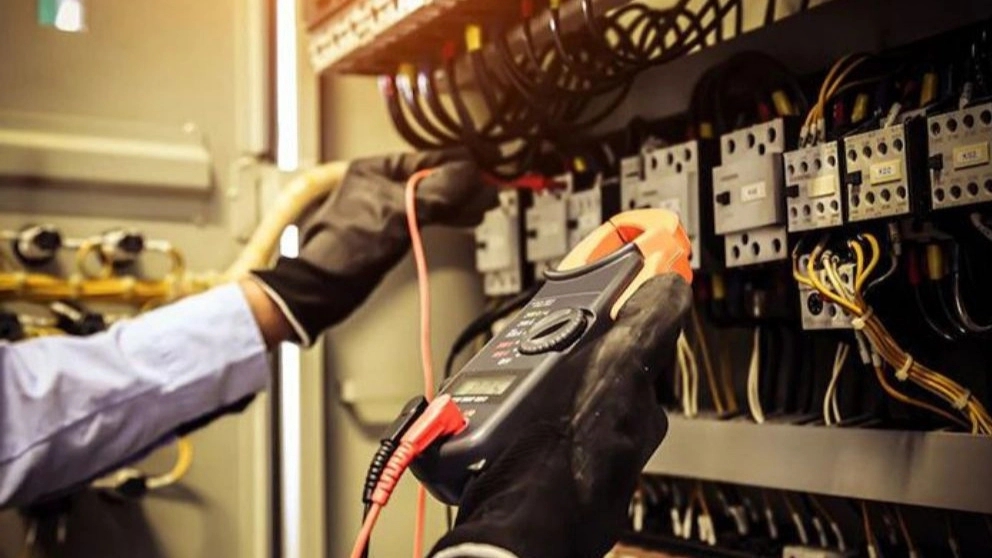What is electrical panel wiring?
One of the most important parts of electrical panel installation in various buildings is its wiring. Electrical panel wiring principles are a set of electrical panel wiring standards and internal and external connections that must be followed and are different depending on the type of electrical panel, location, output capacity, etc. In fact, the wiring of the electrical panel is directly related to the safety and efficiency of the electrical panel in its successive uses in order to supply electricity to the lighting, heating and cooling systems, etc. The basics were done.
Electrical panel wiring is also called electrical panel wiring, which is actually the process of connecting each of the input cables to the electrical panel and the output from it to the internal connections of the panel, such as busbars, fuses, etc. Therefore, various plans are designed and implemented according to the type of electrical panel (building or industrial) and the subgroup of each of the mentioned categories as well as its installation location. The wiring of the switchboard requires high expertise, because the electricians and technicians who install the switchboard are exposed to direct contact with high pressure or low pressure current, and for this reason, in addition to the possibility of electric shock and electrocution for these people, in There will be errors in the installation of electrical equipment and parts.

⏬ Types of electrical panel wiring ⏬
The types of electrical panel wiring are different according to the different types of electrical panels that are installed in various residential, commercial, office or industrial buildings. According to the wiring principles of electrical panels, the types of building electrical panels are: ⬅️ MDP electrical panel or main electrical panel
⬅️ Common electrical panel (GDP)
⬅️ Unit electrical panel (board miniature electricity or SDP)
⬅️ low current electrical panel
⬅️ elevator electrical panel
⬅️ high pressure electrical panel
⬅️ USP electrical panel
According to the different functions of each of these boards, different voltages and currents, as well as the different parts available in each one, the types of wiring available in the electrical board wiring standards are used in them. The various circuits in electrical panels include various types of fuses, relays, transformers, and various switches along with numerous input and output wire and cable connections, and depending on the type of electrical panel, they prevent short circuit, fire, overload, and electric shock. .
*️⃣ Principles of electrical panel wiring *️⃣
The principles of electrical panel wiring are a set of considerations and standards for wiring and connecting to the electrical panel, and their observance, in addition to ensuring the safety of people and equipment related to electrical installations, will lead to the optimization of the use of the electrical panel in various conditions and for a long time. . In the following, a number of criteria in the VDE standard and the wiring principles of industrial electrical panels are presented in this way.

All the connections, especially the connections that are branched from the bus, must have a special press and also be connected to the electrical panel with a special wire and cable and with a bolt and nut connection. Electricity must be installed at least 1 category larger than the required range. Also, to install the CT transformer in the electrical panel, 2.5 wire should be used. The conduit for the wire (duct) inside the electrical panel should have about 1/3 (one third) of free space. And how to insulate the electrical panel and Its outputs should be in such a way that if the bare wire is branched from it, it will not be connected to other equipment and surrounding devices when it is heated due to current or shaking due to various reasons.

All the equipment and parts that are installed in the electrical panel, such as all types of heating and cooling devices, etc., must have fuses. They have to be protected and insulated to the branching place in order to prevent electric shock and creating a connection. If there is a need to create a curve in the path of the wire and cable in the connections of the wires in the electrical panel, avoid creating a 90 degree angle and sharpening. Bends should be avoided and round bends should be used for all wires. All wires should be identified by different colors. For example, wires with city electricity voltage should be marked with black and red colors, and wires coming from voltage transformers should be marked with other colors.
The branched wire and cable from the electrical panel that are used for welding devices, cooling and heating devices and in general for high consumption devices should be considered at least 1 level higher than the calculated limit.
Considering the distance Branching from the switchboard to the point of connection to the external device, the voltage of the wire and cable may drop, which depends on various criteria such as the cross-section of the wire and its length, as well as its material (copper, aluminum, iron, etc.) be considered.

